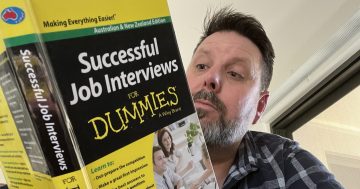Lisa Earle McLeod* says in the wake of the Great Resignation comes the Great Disillusionment as fleeing employees find that new pastures do not live up to their expectations.
 Whether it’s a quest for more money, flexibility, or purpose, millions of people have left their employers searching for greener pastures.
Whether it’s a quest for more money, flexibility, or purpose, millions of people have left their employers searching for greener pastures.
They didn’t always find them: Enter the boomerang employee; the employee who quit, and now wants to come back.
According to Associate Professor of Management at Texas A&M University, Anthony Klotz “we’re going to see lots of [these] employees, who a year from now miss their jobs and decide the change isn’t going as well as expected”.
A new job not living up to expectations is hardly an unprecedented dynamic, but now that experience is happening en masse.
Employers and employees alike are exhausted. Going ‘back to normal’, picking up where everyone left off 18 months ago, can seem like a win-win.
However, is anyone really the same person they were 18 months ago?
So, in the light of changed circumstances, how do we handle the boomerang?
If you’re considering being a boomerang employee — returning to your former employer — think about the future, not the past.
Re-evaluate your former employer through the lens of the future, because ‘going back’ may not really be a choice.
The job you left likely looks different now. Through the lens of future opportunities, challenges and changes, is the role still appealing to you?
Or are you feeling a bit nostalgic over the past, only recognising the best parts?
Maybe it was a project launch, or even an over-the-top holiday party. Those moments stick out to us because they are peak experiences.
We remember them more fondly, and more vividly, than all the minutiae in between.
If you’re considering a boomerang move, push yourself to recall an average day.
Glance back at your old calendar or your inbox if you can, and ground your memory in the reality of day-to-day business.
Wharton Professor, Adam Grant recently shared a study that reports an initial dip in both satisfaction and energy upon starting a new job.
That doesn’t mean the new job isn’t a good move, it just means there are a lot of things to learn, people to meet, norms to get used to, and stuff to get done.
As Grant says, transitions take their toll. The good news is satisfaction and energy often quickly return once acclimated.
If you’re considering hiring a boomerang employee remember the classic Albert Einstein quote: “Insanity is doing the same thing over and over again and expecting different results.”
This employee left for a reason. Even if that reason wasn’t formally documented in an exit interview, being mindful of the rationale can keep you from repeating the same cycle.
If what initially prompted them to leave has not changed, the ultimate outcome likely won’t either.
On the flip side, if those things have changed, like more learning and development opportunities or a bigger salary, it can be an indication that a boomerang hire could be successful.
Old habits die hard. When someone is in a new role or working with a new team, it’s less tempting to fall back into ineffective routines or existing processes.
Re-examining placement can help you capitalise on a previous employee’s skills and expertise while still bringing the energy of a new hire.
It’s not a total fresh start, but it’s not a complete flashback either.
Just like this employee has had a whirlwind of experiences since departing, so has your organisation.
Be upfront and transparent about what has changed. Whether it’s formal, like a new policy, or informal, like a renewed commitment to clients, articulate the journey the organisation has taken since the employee left.
Nobody pressed pause on the movie. Both employees and organisations have changed.
Bringing back an employee (or going back to your previous job) doesn’t make things ‘back to normal’.
That doesn’t mean they can’t be great. Better, even. With clear communication, transparent conversations, and careful planning, a boomerang might be your best move yet.
*Lisa Earle McLeod is the leadership expert best known for creating the popular business concept Noble Purpose. She is the author of Selling with Noble Purpose and Leading with Noble Purpose. She can be contacted at mcleodandmore.com.
This article first appeared on Lisa’s blogsite.











